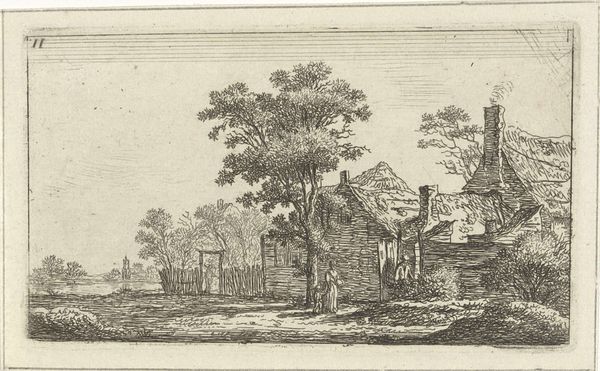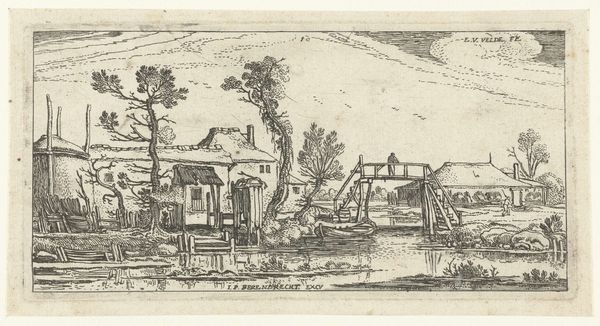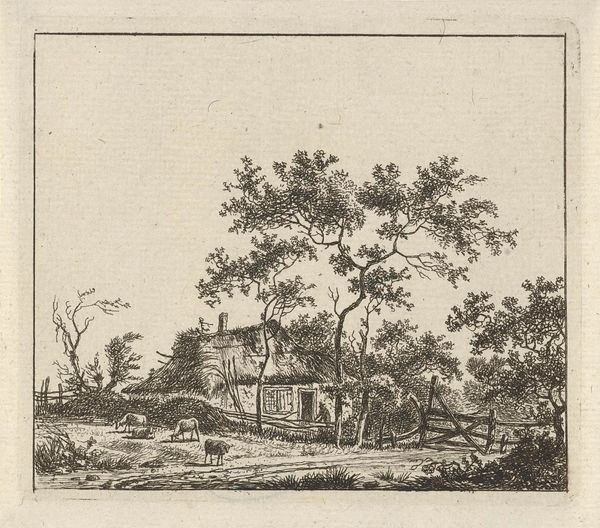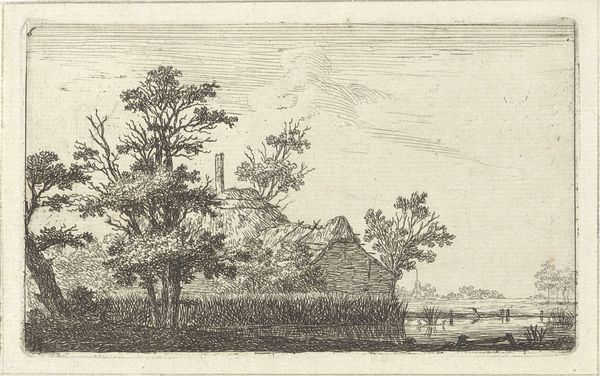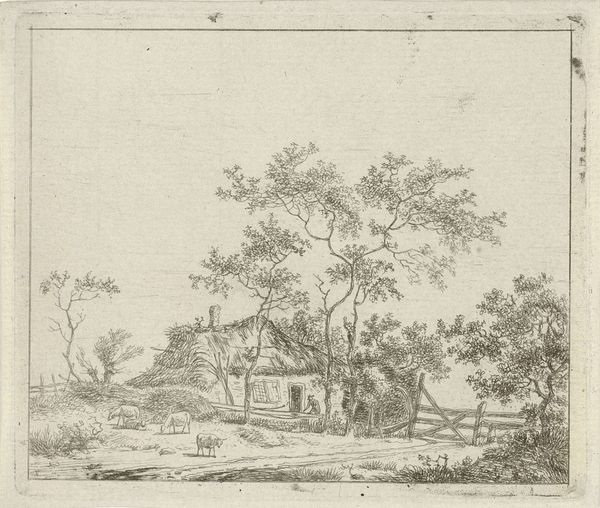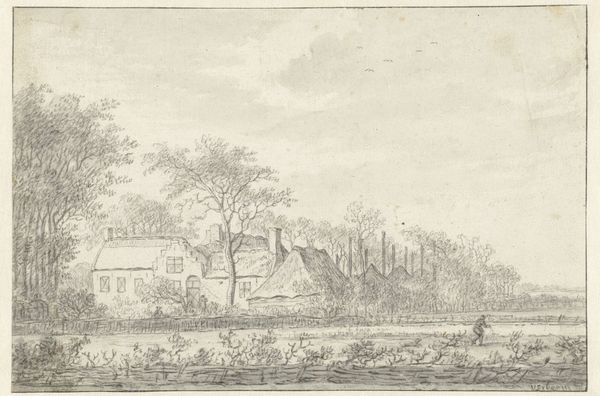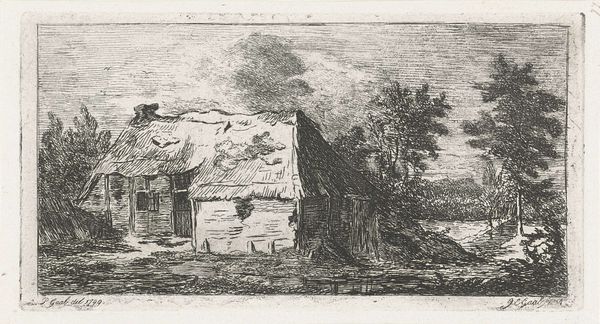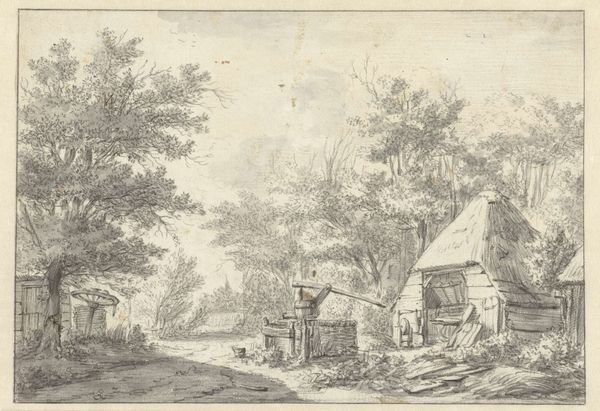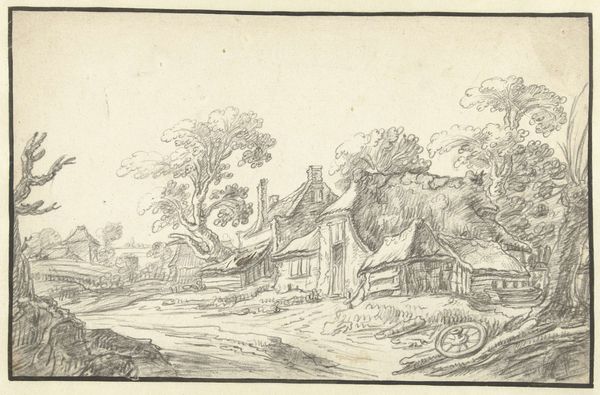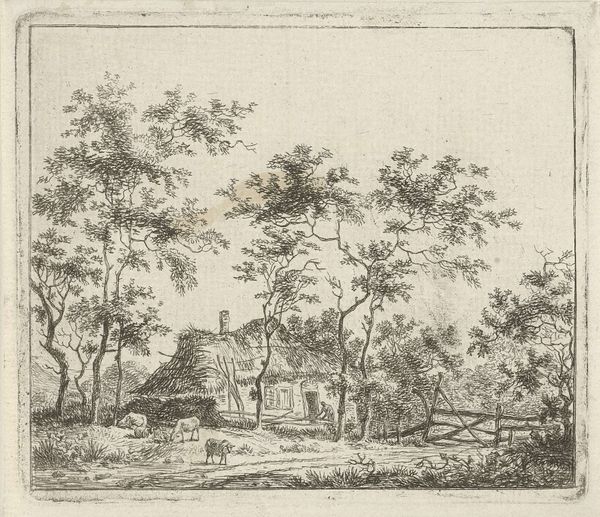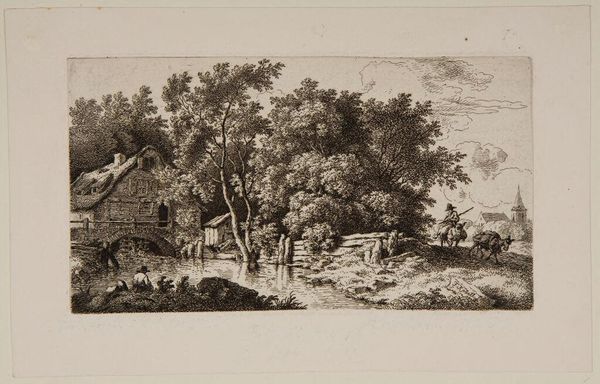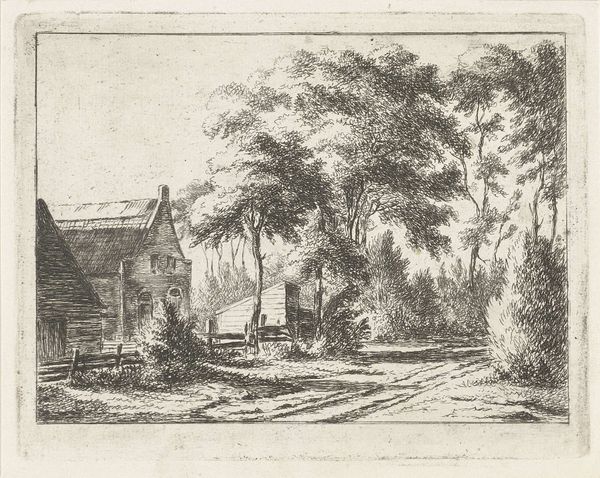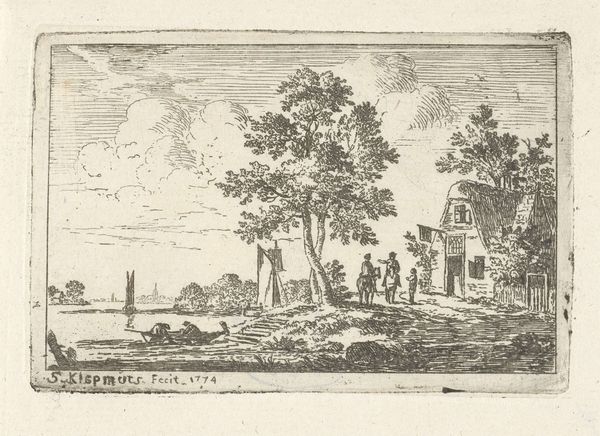
drawing, etching, paper, ink
#
drawing
#
pen drawing
#
dutch-golden-age
#
etching
#
landscape
#
paper
#
ink
#
genre-painting
Dimensions: height 92 mm, width 137 mm
Copyright: Rijks Museum: Open Domain
Curator: Standing here, we're looking at Hendrik Schwegman’s “Farm on the Water and Fisherman in Boat,” dating back to 1786. It's an etching, ink on paper, currently held in the Rijksmuseum. Editor: It’s evocative. Bleak, almost, in its stillness. The muted tones really emphasize the solitude of that waterside dwelling. You can almost feel the damp air. Curator: Genre paintings such as these offer us glimpses into the daily life and values of the period. The landscape and the economic conditions, they influence and are influenced by these humble depictions. This one aligns strongly with the conventions of the Dutch Golden Age landscapes. Editor: The focus on ordinary life does democratize art to a degree. But how "ordinary" was this really? Whose perspectives were centered, and whose were deliberately excluded from these depictions of quaint rural life? It's quiet—too quiet, perhaps? Where are the voices of those who truly labored to build this landscape? Curator: The Dutch Golden Age coincided with an era of massive global trade and colonial expansion. Do you think the detailed execution we see in Schwegman's prints, and the market for them, directly relied on those trade routes and the wealth derived from the colonies? Editor: Absolutely. Landscapes weren't just pretty scenes. They also symbolized ownership, national identity, and of course, obscured some harsh colonial realities. This image may seem innocuous, a quaint, tranquil waterside moment but whose tranquility was it really and at whose expense? It certainly seems like it lacks a social conscientiousness to the time and, frankly, lacks depth. Curator: That reading is spot-on. The very act of representing these scenes became intertwined with societal power structures and evolving political narratives. How can museums present the work and give insight to our patrons, acknowledging not just the work but the world around the work? Editor: Exactly! Bringing in contemporary voices—artists, activists, theorists—can really enrich the historical narrative, push beyond the expected, and reveal the complex social fabric that made this image possible. That's the goal to give all who gaze upon this to truly see beyond the beauty. Curator: Absolutely, reframing it is a social responsibility for museums. Editor: Precisely. It allows us to engage honestly with the complexities of history.
Comments
No comments
Be the first to comment and join the conversation on the ultimate creative platform.
